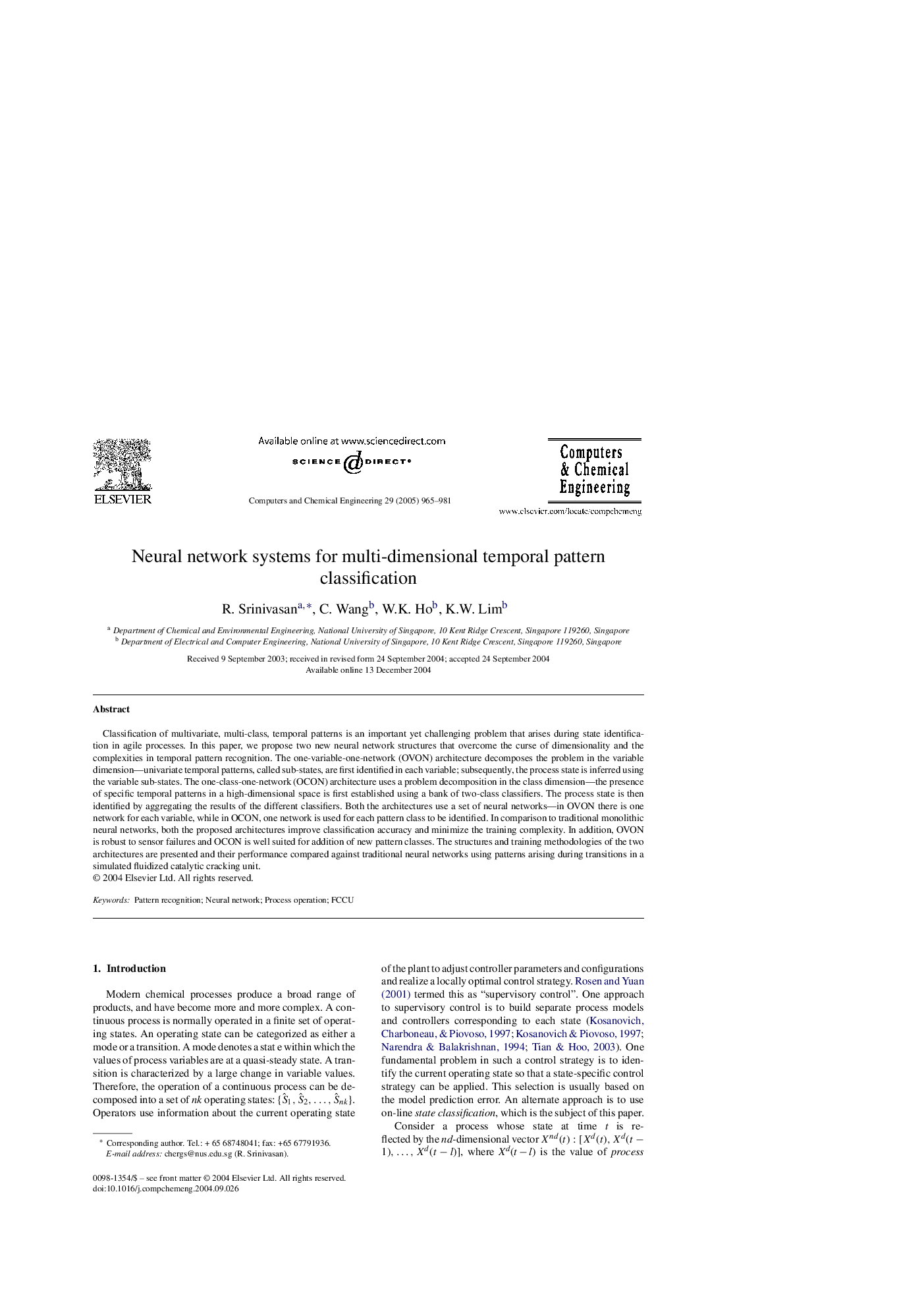| Article ID | Journal | Published Year | Pages | File Type |
|---|---|---|---|---|
| 10265582 | Computers & Chemical Engineering | 2005 | 17 Pages |
Abstract
Classification of multivariate, multi-class, temporal patterns is an important yet challenging problem that arises during state identification in agile processes. In this paper, we propose two new neural network structures that overcome the curse of dimensionality and the complexities in temporal pattern recognition. The one-variable-one-network (OVON) architecture decomposes the problem in the variable dimension-univariate temporal patterns, called sub-states, are first identified in each variable; subsequently, the process state is inferred using the variable sub-states. The one-class-one-network (OCON) architecture uses a problem decomposition in the class dimension-the presence of specific temporal patterns in a high-dimensional space is first established using a bank of two-class classifiers. The process state is then identified by aggregating the results of the different classifiers. Both the architectures use a set of neural networks-in OVON there is one network for each variable, while in OCON, one network is used for each pattern class to be identified. In comparison to traditional monolithic neural networks, both the proposed architectures improve classification accuracy and minimize the training complexity. In addition, OVON is robust to sensor failures and OCON is well suited for addition of new pattern classes. The structures and training methodologies of the two architectures are presented and their performance compared against traditional neural networks using patterns arising during transitions in a simulated fluidized catalytic cracking unit.
Related Topics
Physical Sciences and Engineering
Chemical Engineering
Chemical Engineering (General)
Authors
R. Srinivasan, C. Wang, W.K. Ho, K.W. Lim,
